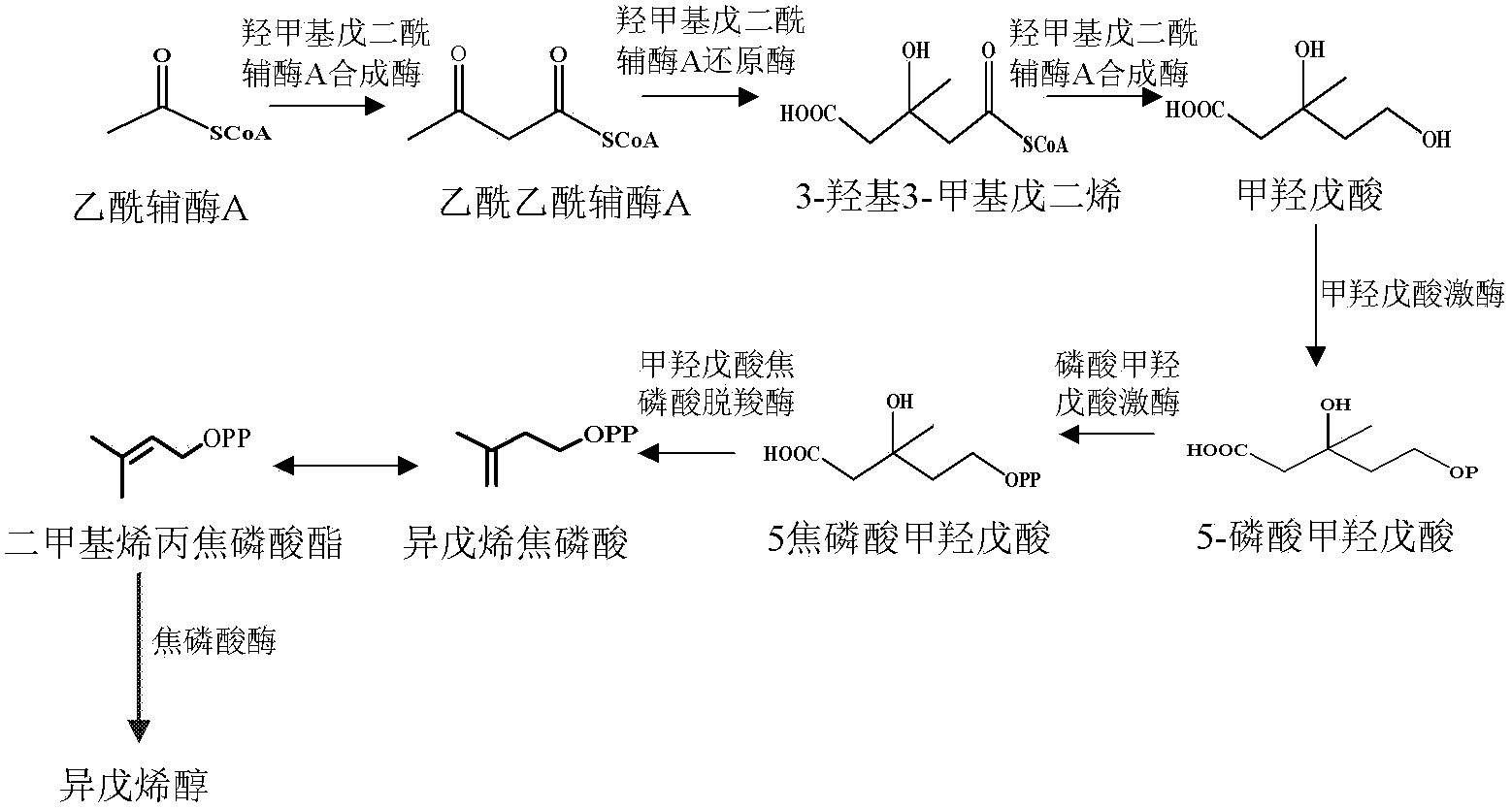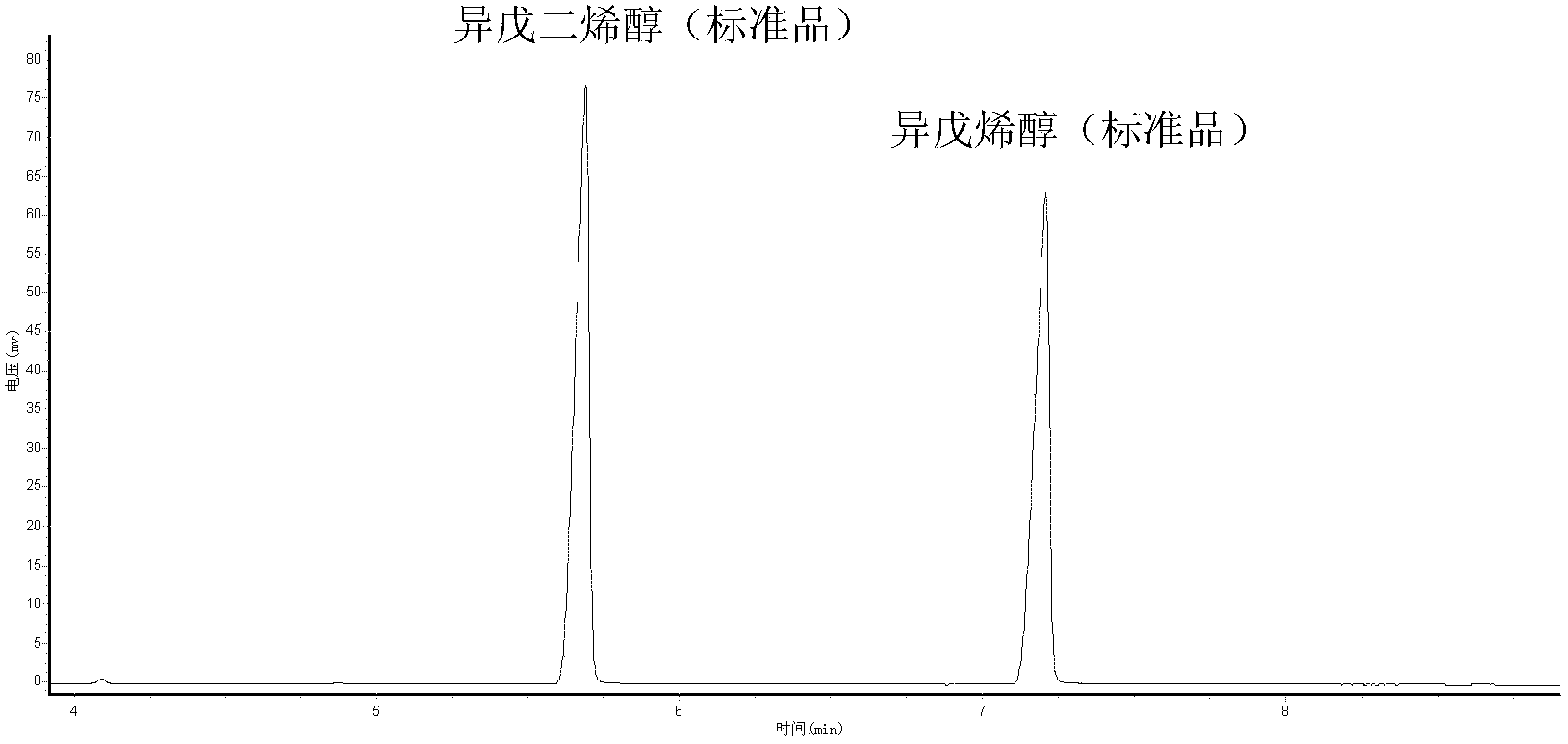Method for synthesizing isopentenol by biological methods
A technology of isopentenyl pyrophosphate and synthase, applied in the directions of microorganism-based methods, biochemical equipment and methods, microorganisms, etc., can solve the problem of no isoprenol and isoprenol production route optimization, equipment corrosion Large, no substrate specificity research and other problems, to solve the unsustainable effect of raw materials
- Summary
- Abstract
- Description
- Claims
- Application Information
AI Technical Summary
Problems solved by technology
Method used
Image
Examples
preparation example Construction
[0040] In the method for preparing recombinant E. coli strains of the present invention, the construction of plasmids or vectors and the method of transforming competent cells are not limited, and conventional methods known in the art can be used.
[0041] The antibiotic resistance genes in the above recombinant plasmids A, B, C and D may be the same or different. The antibiotic resistance gene can be selected from antibiotic resistance genes known in the art, for example, chloramphenicol, ampicillin, kanamycin, tetracycline and the like. The engineering Escherichia coli containing the above three recombinant plasmids or expression vectors can be screened out more efficiently and accurately through different combinations of antibiotic resistance genes.
[0042] In the method for preparing recombinant Escherichia coli strains of the present invention, the selection is carried out by using the antibiotic resistance of various recombinant plasmids, that is, according to different...
Embodiment 1
[0059] By co-overexpressing the HMG-CoA synthetase gene (mvaS) (SEQ ID NO: 1) and the HMG-CoA reductase gene (mvaE) derived from Enterococcus faecalis in Escherichia coli (E.coli) ( SEQ ID NO: 2), derived from the mevalonate kinase gene (ERG12), mevalonate phosphokinase (ERG8), mevalonate pyrophosphate decarboxylase gene (MVD1) and large intestine of Saccharomyces cerevisiae Bacillus (Escherichia coli) pyrophosphatase gene (EcNudF) (SEQ ID NO: 3), the obtained engineering Escherichia coli can use sugar to biosynthesize prenol.
[0060] 1.1 Cloning of foreign genes and construction of expression vectors
[0061] 1.1.1 Cloning of foreign genes
[0062] 1.1.1.1 Cloning of HMG-CoA synthetase gene from Enterococcus faecalis
[0063] According to the operating steps provided by the bacterial genome extraction kit (purchased from OMEGA, Cat.No.D3350-01), the genomic DNA of Enterococcus faecalis (purchased from ATCC, No.29212) was extracted, primers were designed according to the ...
Embodiment 2
[0097] The synthesis of embodiment 2 isopentenols
[0098] 2.1 Separation of isopentenol products (the following determination results take CGMCC No.5745 strain as an example)
[0099] During the fermentation process, air is continuously introduced, and the tail gas will continuously take out the isopentenol in the fermentation broth, and the tail gas will be cooled at a low temperature, and the water and prenol in the tail gas will be condensed to obtain concentrated isopentenol The enol product, the final prenol, is further isolated and purified by distillation.
[0100] 2.2 Determination of isopentenol product
PUM
| Property | Measurement | Unit |
|---|---|---|
| boiling point | aaaaa | aaaaa |
| flash point | aaaaa | aaaaa |
| solubility (mass) | aaaaa | aaaaa |
Abstract
Description
Claims
Application Information
 Login to View More
Login to View More - R&D
- Intellectual Property
- Life Sciences
- Materials
- Tech Scout
- Unparalleled Data Quality
- Higher Quality Content
- 60% Fewer Hallucinations
Browse by: Latest US Patents, China's latest patents, Technical Efficacy Thesaurus, Application Domain, Technology Topic, Popular Technical Reports.
© 2025 PatSnap. All rights reserved.Legal|Privacy policy|Modern Slavery Act Transparency Statement|Sitemap|About US| Contact US: help@patsnap.com



